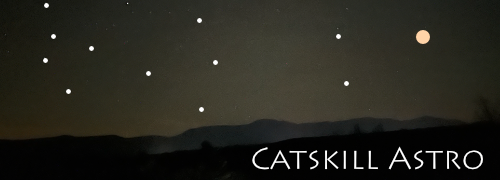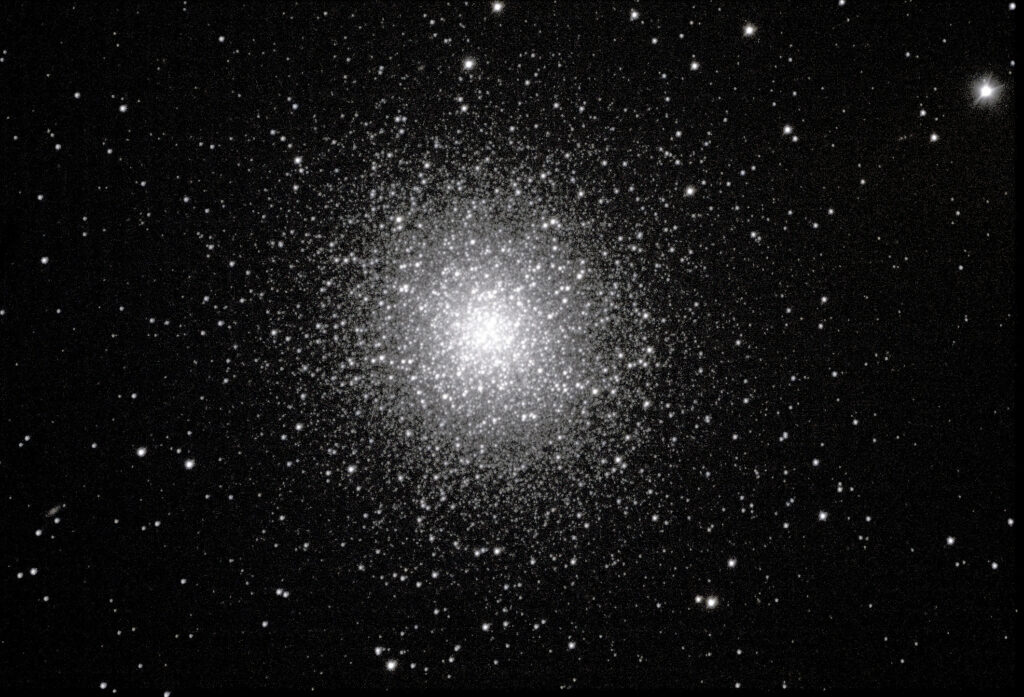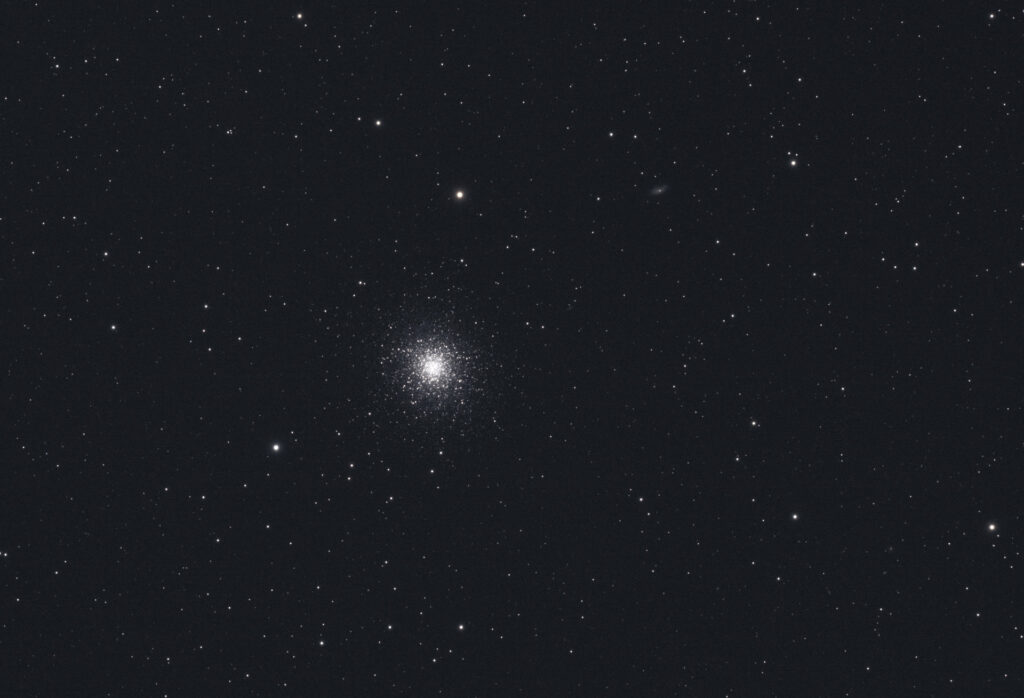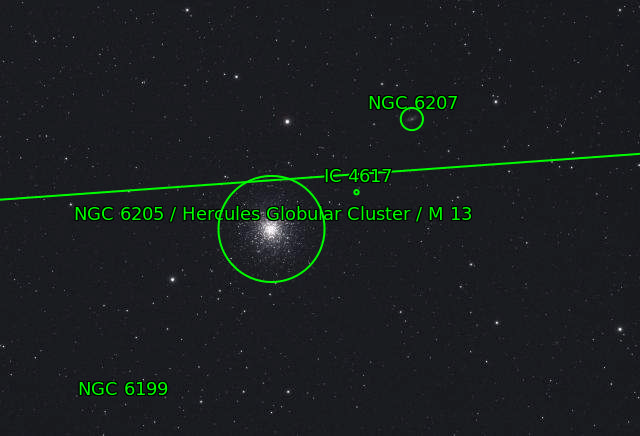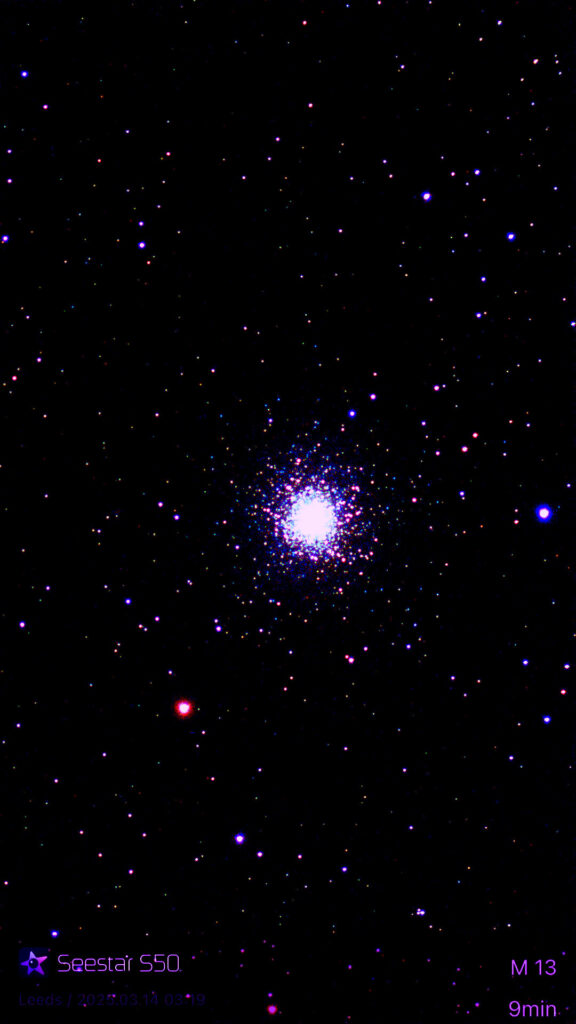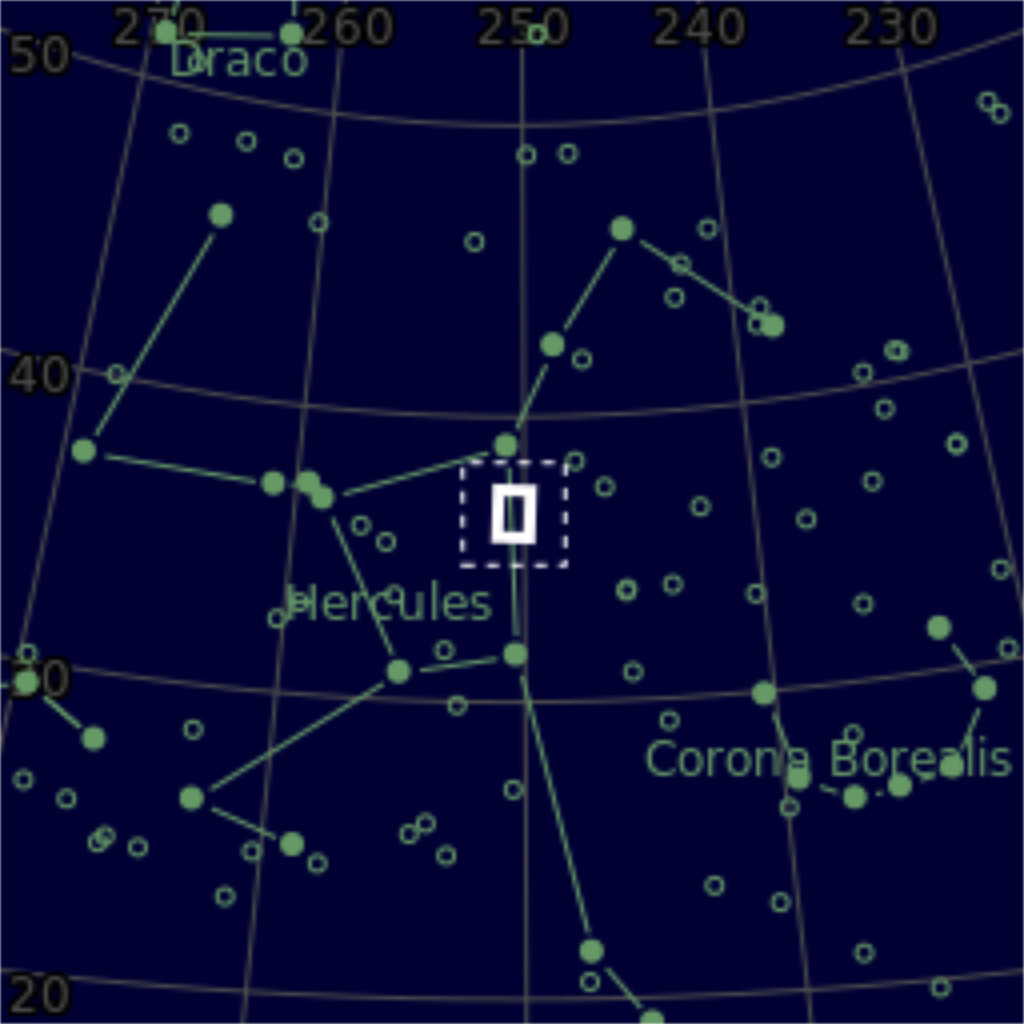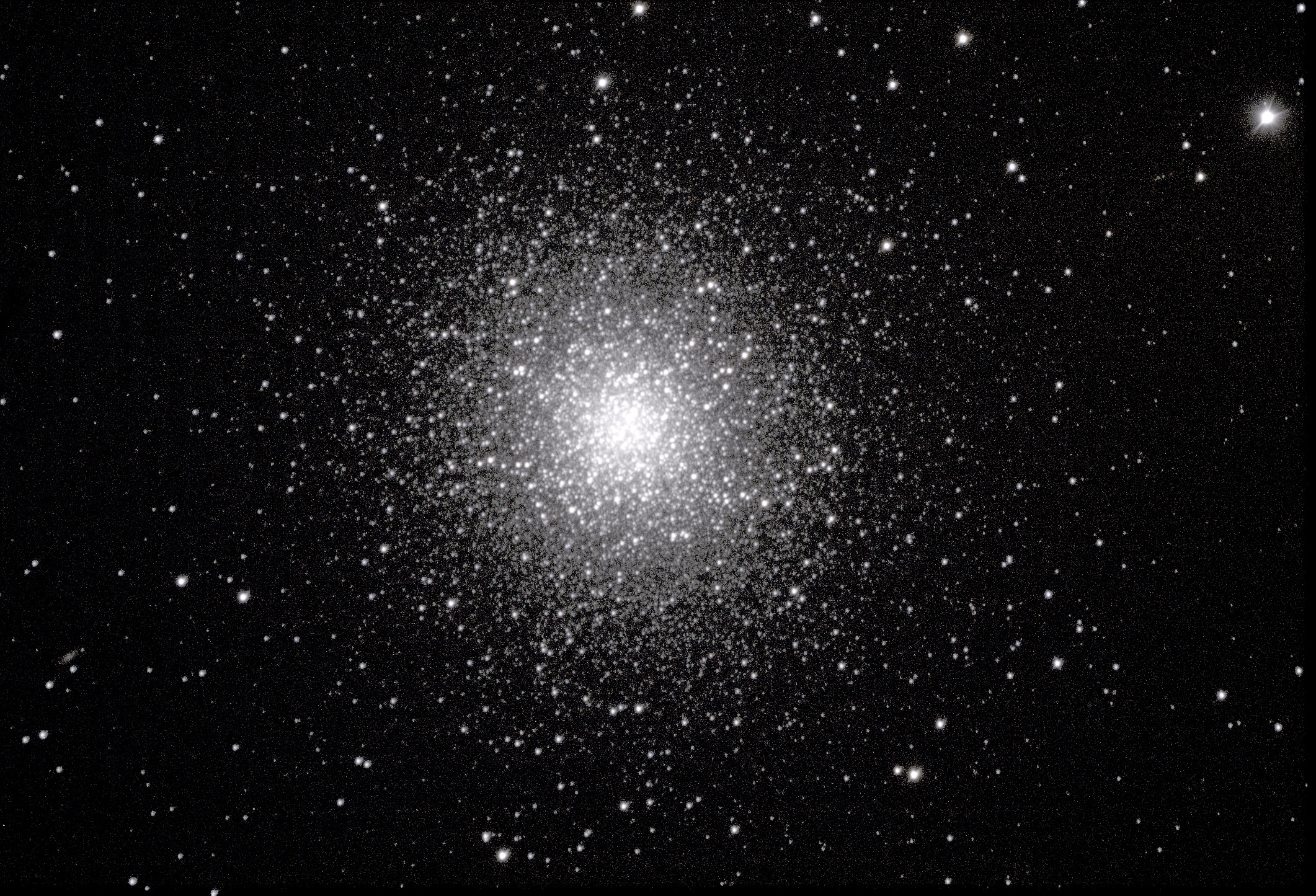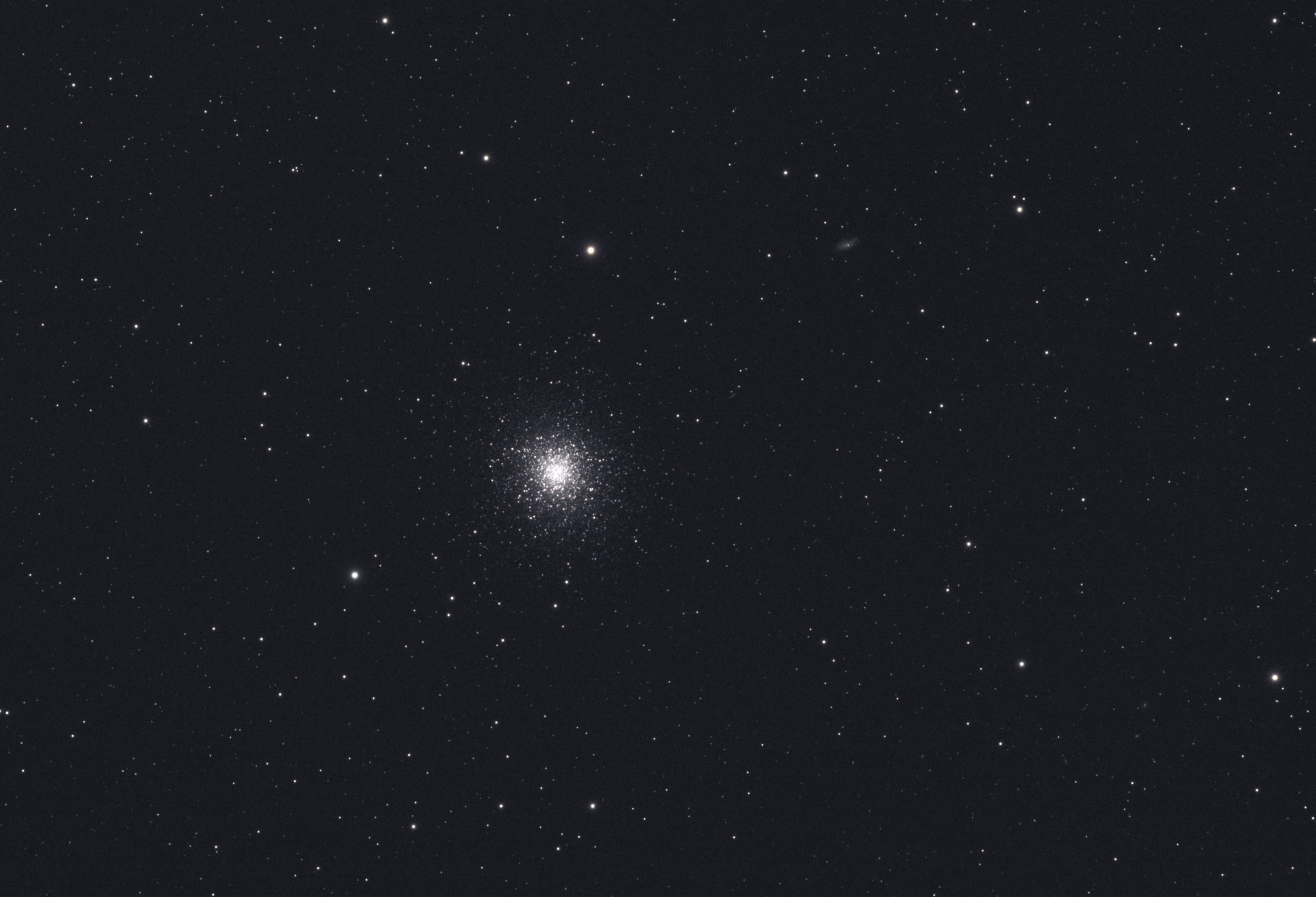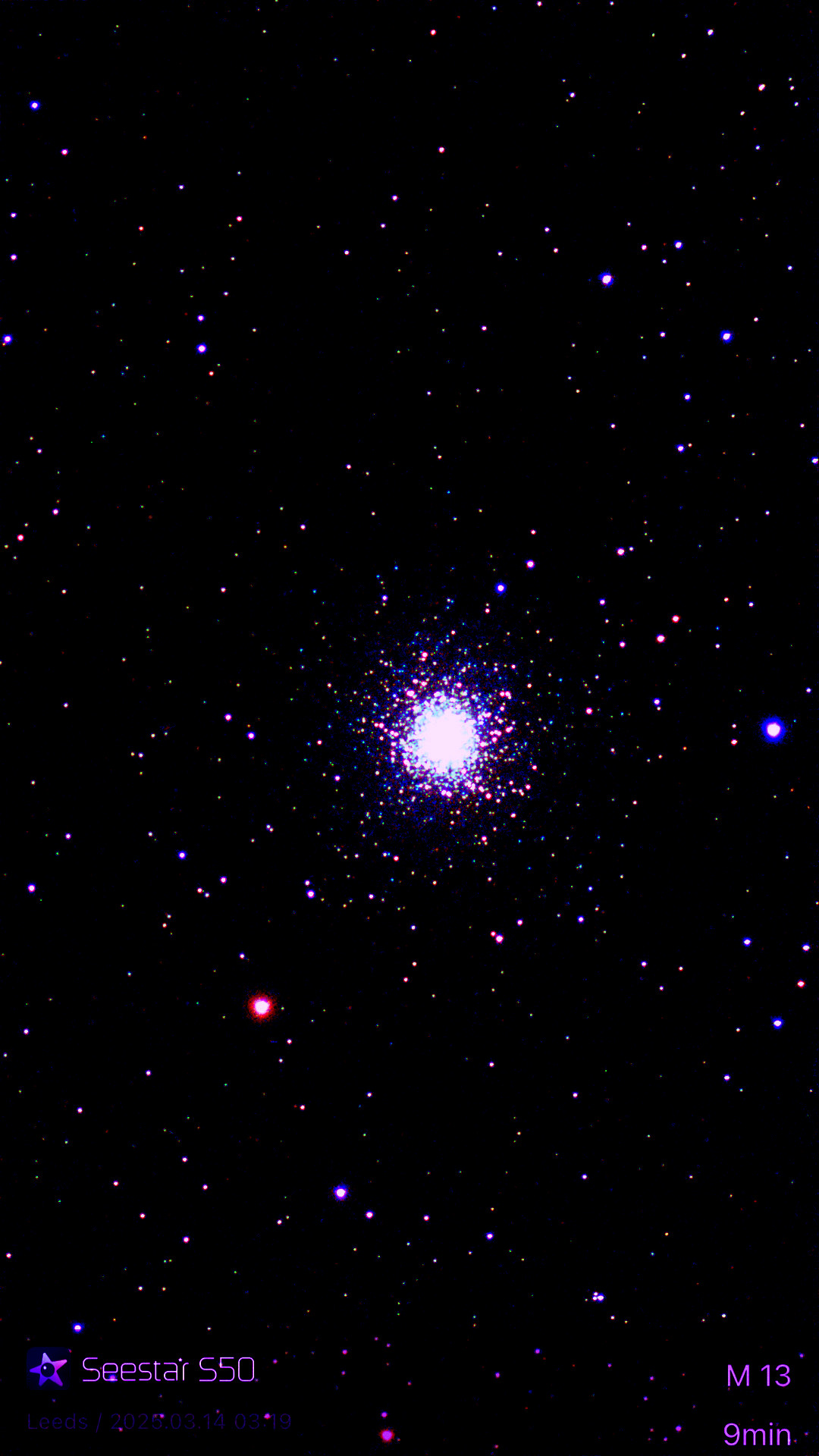| Description | M13 was discovered by Edmond Halley in 1714. Halley, later Astronomer Royal, calculated the orbital period of Halley's Comet, named for him posthumously when it appeared on schedule in 1758. It was cataloged by Messier on June 1, 1764: "Nebula without star, discovered in the belt of Hercules; it is round & brilliant, the center [is] more brilliant than the edges, one perceives it with a telescope of one foot [FL]....M. Messier has reported it on the Chart of the Comet of 1779, which was included in the volume of the Academy of that year". <--> M13 is ranked #4 in terms of both diameter and brightness among all Messier GCs. That may be true, but M13 has the densest cluster of stars. It's minimally oblate, by my measurement 1325px wide x 1250px tall (1.06 ratio). If it's "up" when friends visit, or at a star party, it's a "must go to" object, and often the audience's favorite of the night. This entry provides three separate observations of M13. The featured image was captured on a night of unusually excellent seeing and transparency, and provides the best view of cluster itself. Unfortunately, it was so bright, I was unable to recover any star colors. My favorite M13 observation is the wide field view, taken with my Askar V configured at, I think, 600mm, with a view of galaxy NGC 6207, slightly up and to the right. This provides the annotation view in the gallery. In general I think clusters are more interesting in wide-field than close up. Third, I've added an observation from the pre-dawn March 14, 2025 lunar eclipse using my Seestar. This view, with some pretty intense color correction, allowed me to recover more star colors. |

